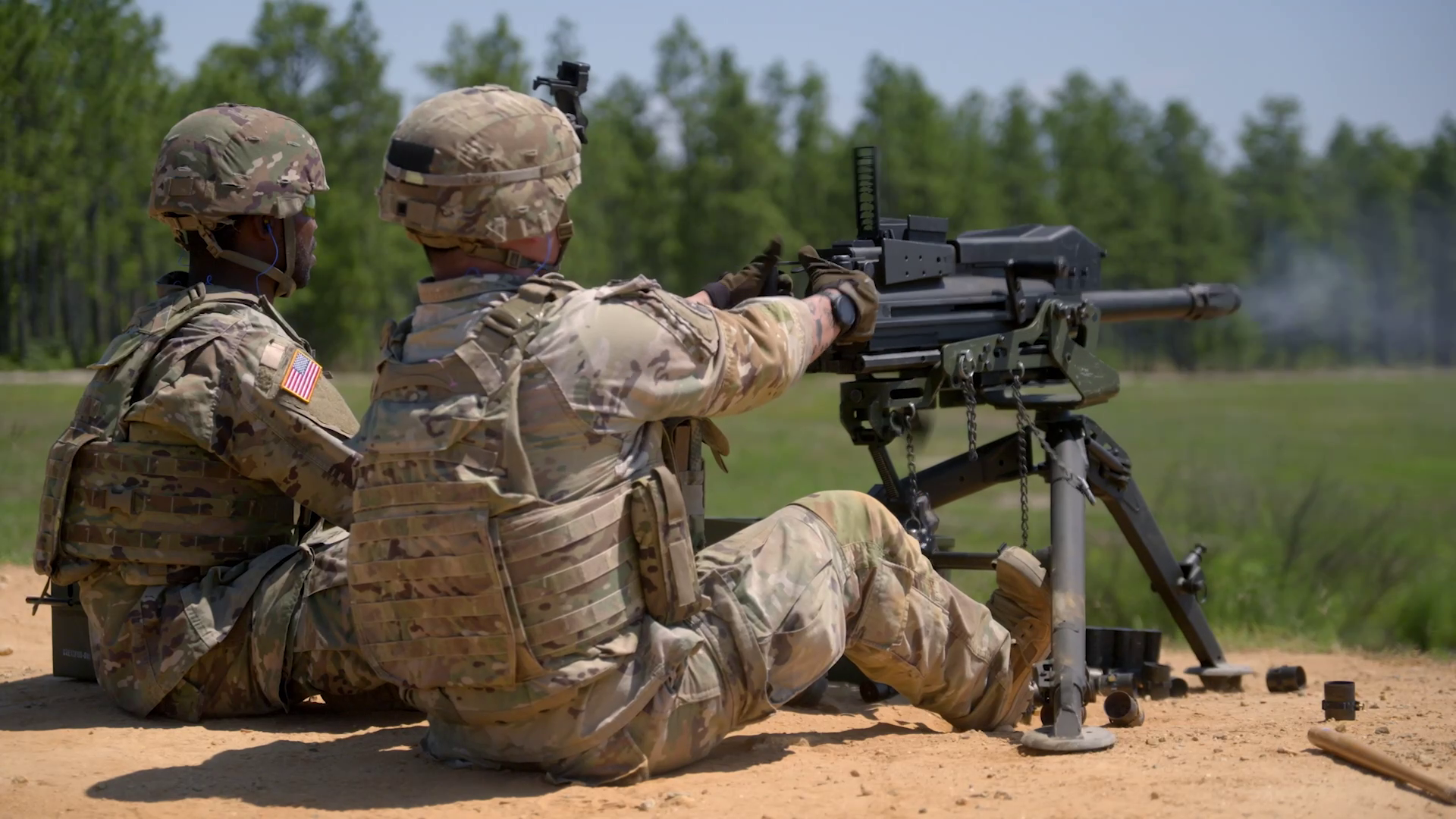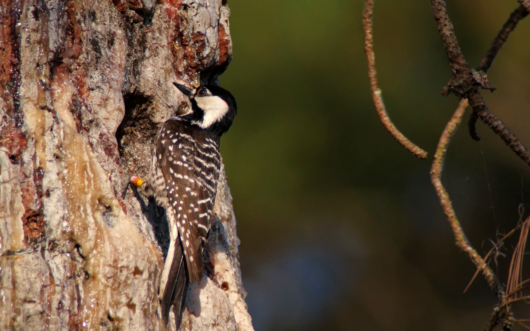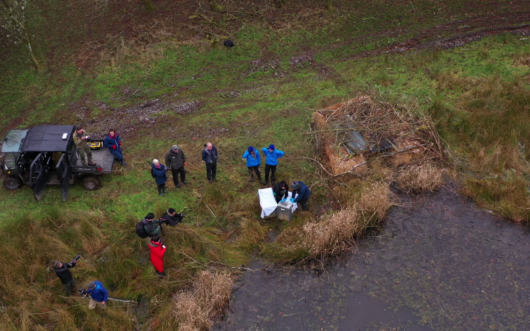A century ago, the longleaf pine forests of the southeastern United States were flooded with birdsong—and the musical hammering of millions of red-cockaded woodpeckers. But by 1995, deforestation had caused woodpecker numbers to plummet to 4000 breeding groups.
Coming to the rescue was an unlikely savior: the United States military. You can see how the birds survived—and thrived—on the firing ranges of North Carolina’s sprawling Fort Liberty in Wild Hope’s Woodpecker Wars. After conservationists discovered that the birds flourish in areas frequently burned by wildfires, Fort Liberty’s leaders embraced their role as woodpecker protectors—and are helping the species make a comeback in areas outside the base as well.
Biodiversity Arcs
As more and more land across the United States is eaten up by development, hundreds of military bases have emerged as surprising refuges of biodiversity. Scientists, soldiers, and people from local communities are teaming up to protect wildlife on these bases, which are part of around 27 million acres managed by the U.S. Department of Defense, says Ava Margerison, public affairs chief at Travis Air Force Base in California.
“People don’t really realize how much conservation work goes on on Department of Defense land, but there’s a tremendous amount,” says Michael Wright, president of the National Military Fish and Wildlife Association (NMFWA). The nonprofit raises awareness and supports projects that couple conservation work and military goals. Partnerships like these serve two purposes: Maintaining diverse environments for military training and upholding laws that protect those environments, Wright adds. “You’ve got millions of acres of basically wild lands, and it needs to be managed.”
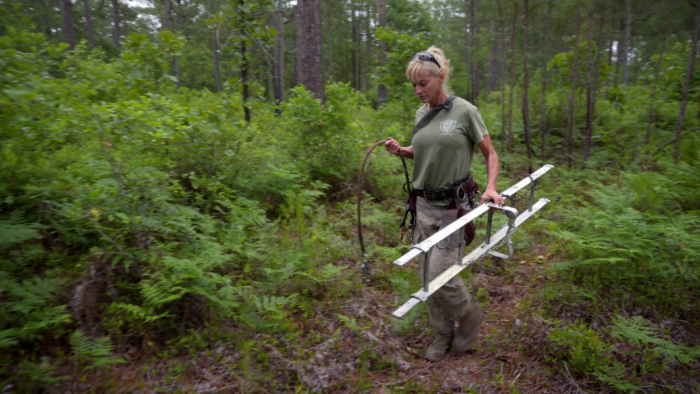
That management became a formal responsibility in 1960, when the Sikes Act required the defense department and other federal agencies to work together to protect and rehabilitate natural resources on military bases—without degrading base security. The Endangered Species Act, enacted in 1973, mandated further wildlife protections. As a result, says Wright, military bases are havens for species as diverse as the Florida bonneted bat, the Hawaiian stilt bird, and the gopher tortoise.
Here are some other examples of species that bases have taken under their wing:
Pollinator Protectors
Every autumn, monarch butterflies migrate thousands of miles from Canada to Mexico. At one stopover along the way—the U.S. Army’s Fort Cavazos in central Texas—staff and nonmilitary volunteers tag the vibrant butterflies as they rest, refuel, and pollinate flowers near the base. The tiny tags let researchers track the monarchs’ flight paths and estimate their population size. (Monarch numbers have crashed over the past two decades, and the species was listed as endangered in 2022.) Team members also collect microscopic scales that cover the monarchs’ bodies to test for a deadly parasite: Ophryocystis elektroscirrha, a single-celled organism that weakens the butterflies’ offspring, reducing the odds they will develop properly and survive migration.
The volunteers, after passing a background check, can do their conservation work on base. “It’s really rewarding. Anyone from children to the elderly can participate,” says Amber Dankert, supervisor of wildlife management at Fort Cavazos. In the last six years, Dankert and her crew have tagged more than 10,000 monarchs, she says. Their next plan is to seed the fort’s surrounding grasslands with monarch-friendly flowers.
Salamander Saviors
The sleek black-and-yellow California tiger salamander, listed as vulnerable, is native to central California’s grasslands—an area that’s also home to Travis Air Force Base, around an hour north of San Francisco. Juveniles winter in breeding ponds, then scamper as far as a mile in early summer, in search of abandoned rodent burrows.
Seventeen breeding ponds flank the base, and the salamanders often amble across the airfield, where they risk getting squashed by vehicles or equipment. Biologists swoop in to trap and relocate the juveniles out of harm’s way. Three endangered species—a pond-dwelling shrimp, a tadpole, and a native wildflower—and the federally-protected burrowing owl are also found on the base’s territory.
Sea Turtle Shepherds
Three endangered species of sea turtle—green, loggerhead, and Kemp’s ridley—nest on beaches in southeastern Virginia near the Naval Air Station Oceana Dam Neck Annex. There, Wright coordinates with naval facilities, the U.S. Fish and Wildlife Service, and state biologists to manage sea turtle habitat.
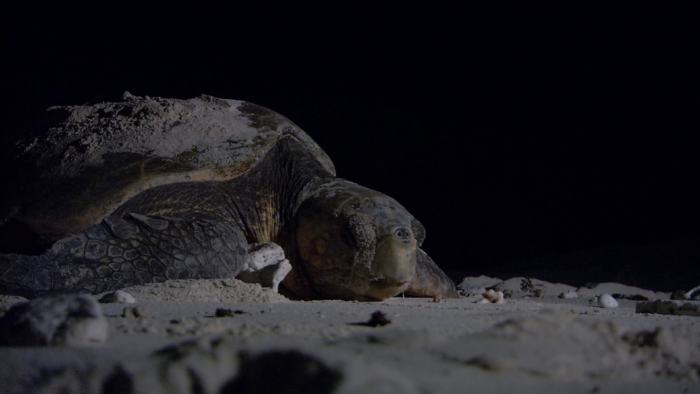
Together, these entities survey nesting sites and work with “nest-sitters”: volunteers who guard the nests and shepherd baby sea turtles as they scootch their way to sea. Protecting the turtles and their habitat also allows naval training to continue in areas of the Dam Neck Annex beach where such activities won’t harm turtles, says Wright.
Balancing the needs of soldiers and species “can be challenging,” says Wright. But “the conservation world and the military at large will find a way to find that balance.”
